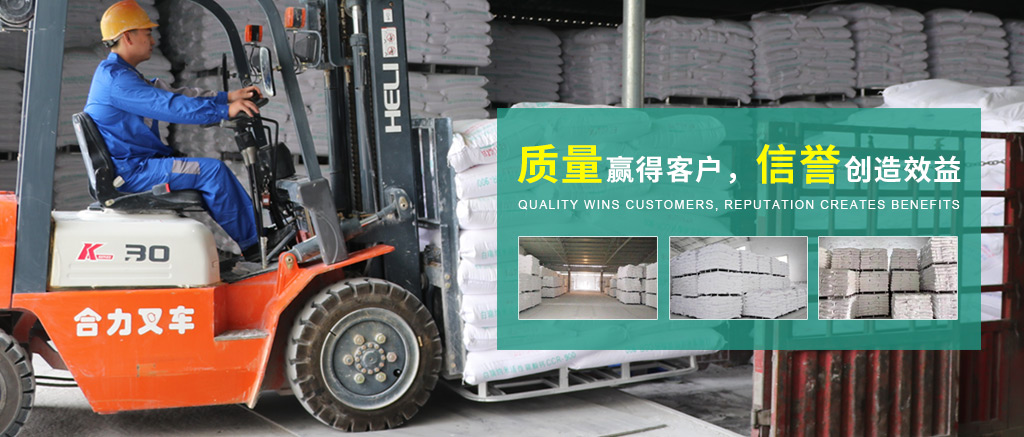Analysis of properties and production process of light calcium carbonate
Time: 2019-02-27
Light calcium carbonate is also known as precipitated calcium carbonate, referred to as light calcium, molecular formula CaCO3, molecular weight 100.09. Light calcium is the calcination of limestone and other raw materials to produce lime (mainly calcium oxide) and carbon dioxide, and then add water to digest the lime to produce lime milk (mainly calcium hydroxide), and then through carbon dioxide carbonized lime milk to produce calcium carbonate precipitation, and finally by dehydration, drying and crushing. Or calcium carbonate is precipitated by sodium carbonate and calcium chloride, and then prepared by dehydration, drying and grinding. Because the sedimentation volume of light calcium carbonate (2.4-2.8mL/g) is larger than that of heavy calcium carbonate (1.1-1.4mL/g), it is called light calcium carbonate.
Light calcium property
White powder, tasteless, odorless, specific gravity about 2.71. Decomposition at 825 ~ 896.6ºC, melting point 1339ºC. There are two forms of amorphous and crystalline form, and the crystalline form can be divided into rhombic crystal system and hexagonal crystal system, which are columnar or diamond shaped. Insoluble in water and alcohol. It dissolves in acid and releases carbon dioxide at the same time, showing an exothermic reaction. Also soluble in ammonium chloride solution. Stable in air with slight moisture absorption.
Light calcium use
It can be used as filler in rubber, plastic, paper, paint and ink industries. Widely used in organic synthesis, metallurgy, glass and asbestos production. It can also be used as a medium seed agent for industrial wastewater, an acid agent for gastric and duodenal ulcer disease, an antidote for acidosis, a SO2 eliminating agent in SO2 waste gas, a filler for dairy cattle feed and an anti-stick agent for oil felt. It can also be used as a raw material for dental powder, toothpaste and other cosmetics.
Light calcium process
Carbonization method: After mixing limestone and white coal in a certain proportion, the finished product is obtained through high temperature calcination, water digestion, carbon dioxide carbonization, and then centrifugal dehydration, drying, cooling, crushing and screening.
CaCO3== High temperature ==CaO+CO2↑
CaO+H2O===Ca(OH)2
Ca(OH)2+ CO2===CaCO3↓+H2O
Characteristics of light calcium carbonate powder
1, the particle shape is regular, can be regarded as monodisperse powder, but can be a variety of shapes, such as spindle, cube, needle, chain, spherical, sheet and quadrangular column. These different shapes of calcium carbonate can be prepared under controlled reaction conditions.
2. Narrow particle size distribution.
3, small particle size, the average particle size is generally 1-3μm. To determine the average particle size of light calcium carbonate, the short-axis particle size of the triaxial particle size can be used as the expression particle size, and then the median particle size is used as the average particle size. Unless otherwise stated, the average particle size refers to the average short-axis particle size.
Process flow of light calcium carbonate
1, limestone calcination: in the lime kiln, according to the ratio of 6:1 to add limestone and anthracite, through related technology calcination auxiliary equipment, after the completion of the calcination reaction, natural cooling, ash, you can get quick lime (CaO).
2. Quick lime digestion: Add quick lime and water to the digester (chemical aircraft), dissolve and stir the slurry into the coarse slurry tank.
3. Carbonation of lime water: The lime water in the crude slurry pond (cement underground pond) enters the slurry pond after the separator (divided into 2 times,3 times the effect is better), and then the slurry of the slurry pond is pumped into the carbonization tower (cylindrical carbonization tower) to help the CO2 from the lime kiln to react at 40 ~ 50℃, the slurry will become cloudy, and the reaction can be about 2-3 hours, and then become cooked slurry. Finally, the cooked pulp is put into the settling tank.
4, drying: use centrifuge drying equipment to dry, and then go into the drying process.
5, drying: the dehydrated powder containing 30% water, into the drying furnace, at a temperature of about 200° for drying.
6, grinding: the use of air separator or air sieve and other equipment for screening, grinding after the finished product.
7. Packaging: The finished product is put into the bag with the packing machine.
8, warehousing: use forklift to transfer into the warehouse.







 Home
Home  News
News
